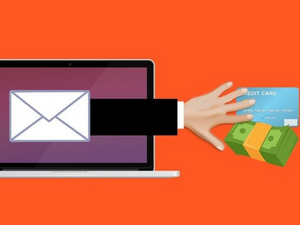Microsoft recently fixed a serious security flaw in Outlook that scored a 9.8 on the Common Vulnerability Scoring System.
This flaw, CVE-2023-2339, is a zero-click vulnerability. It could let hackers steal sensitive information from user accounts and send malicious emails as if they were the user.
The CVE-2023-2339 flaw affects all supported Windows Outlook versions. However, Outlook on the web, Android, iOS, Mac, and Microsoft 365 services are unaffected.
How the Security Flaw Works
The flaw comes from a Microsoft Outlook feature that allows users to customize their
notification sounds. The problem is that the audio file is on a remote server.
Cybercriminals can send malicious emails posing as calendar invites. The victim’s computer then loads the notification sound from a server controlled by the threat actor.
This can expose login credentials, which the hacker can use for unauthorized access.
The victim doesn’t even have to do anything for this to happen. When Outlook gets the
malicious email, it automatically starts the process remotely.
Protecting Your Business
The first step is to install the latest security update for Microsoft Outlook. For now, you should also limit using the New Technology LAN Manager (NTLM).
Companies can also block outbound SMB traffic over port 445. This will help prevent
unauthorized access.
Microsoft has also released an audit tool to help businesses determine if there was a breach.
Actionable Steps for Business Owners
To protect your business and customers from this Microsoft Outlook security flaw, consider these proactive steps:
1. Educate staff about the importance of security updates.
2. Keep Microsoft Outlook installations updated with the latest patches.
3. Monitor network traffic and block unauthorized connections.
4. Encourage strong, unique passwords and install multi-factor authentication (MFA).
5. Regularly review and update cybersecurity policies and practices.
These strategies help address potential cyber threats and keep your business data secure.
Cybercriminals can use the weakness in Microsoft Outlook to steal sensitive information and pose as users. This is a big risk for businesses.
Owners must act quickly to secure their systems and protect their customers. Use the steps above to avoid potential threats and keep your computer system safe.





